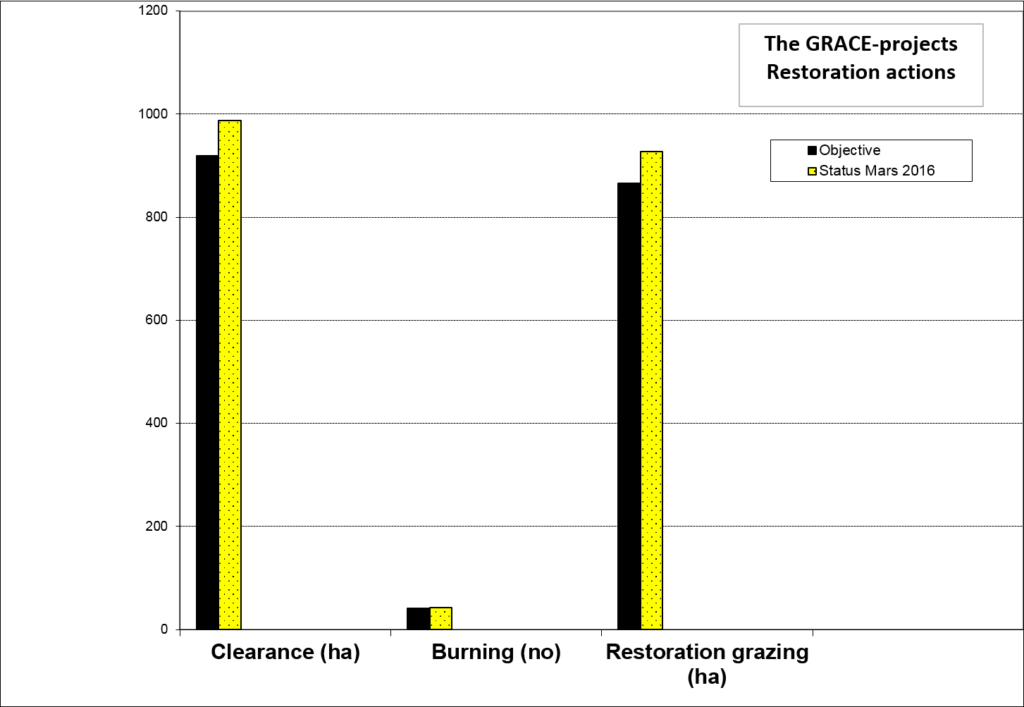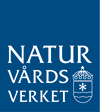Main activities
Restoration plans
In order to implement the restoration actions of the project a total of 35 restoration plans have been produced (published in swedish). These provide the basis of the project. The planes can be downloaded from the projects webb site (only in Swedish).
Management plans
Ten management plans have been produced for the Nature reserves in those cases where the management plan did not agreed with the management which was suggested within this project and which is described in the restoration plans.
A total of nine management plans have been finalized (Listerby Skärgård, Almö, Kvalmsö, Järkö in Blekinge; Villinge Boskapsö and Arholma-Idö in Stockholm; Vendelsöarna in Halland; Härön and Klåverön in Västra Götaland (2015). Further one management plan for Hällsö (Tanumskusten) is produced, but the appeal period is not reached yet. All Management plans can be down loaded from this site.
Concrete conservation actions
Final status of the restoration activities
Clearing of trees and bushes on 988 ha
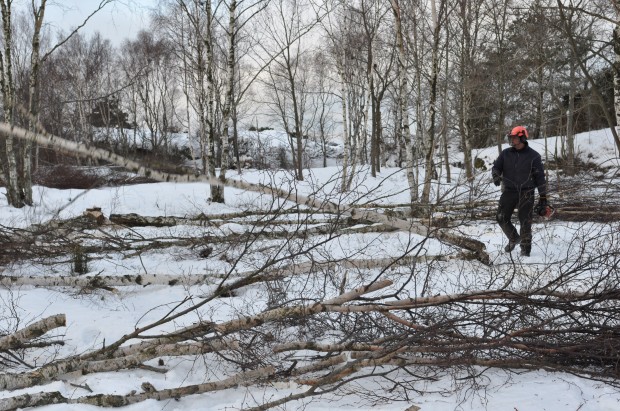
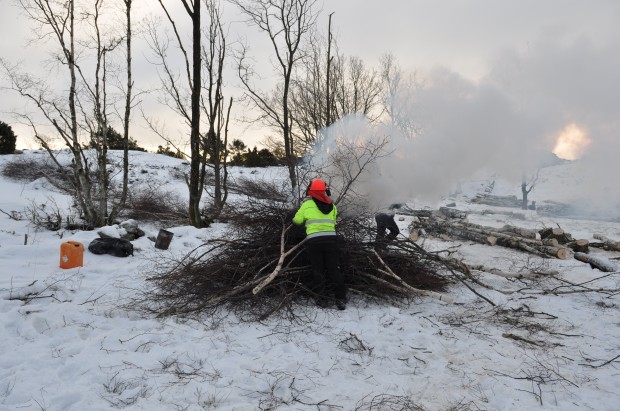
All projects sites was to a greater or lesser extent overgrown with trees and bushes at the beginning of the project which meant that these habitats which are dependant upon management had unfavourable conservation status. Clearance work is critical for the restoration and conservation of the habitat values within this project. Clearing of overgrown vegetation was carried out in all project sites. The way in which this was made varied dependent upon the unique natural and heritage values, circumstances and environmental conditions of each site.
Clearance work within the GRACE Project was primarily carried out on islands which are not connected with the mainland. This increased the costs for management significantly compared with similar projects where the sites are easy to access with road transport vehicles. In many cases a large proportion of the clearance was carried out manually. Many of the project sites was also very fragmented within a mosaic of cliffs and rocks, which added further costs due to having to repeatedly move equipment, often in difficult terrain. A total of 920 ha was planned to be restored by clearence of trees and bushes, the result after the restoration was 988 ha.
Burning of heaths on 43 locations (9 sites)
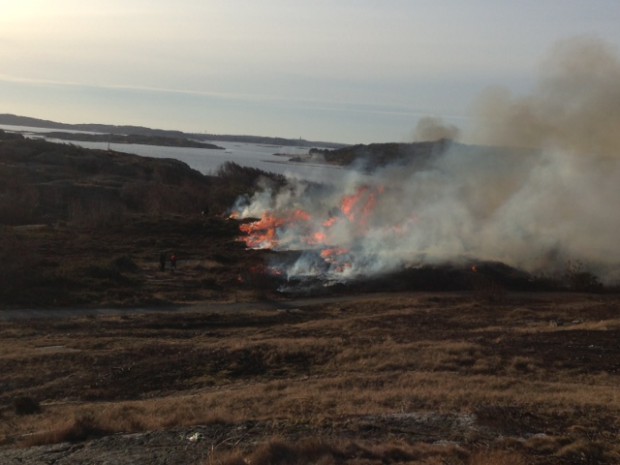
Burning on Rörö (SE0520036). Photo Roy Andersson, overonwest.
In many of the project sites some of the traditional management methods have included regular burning and the removal of woody material for firewood. The areas which have been burned are primarily heathlands and pasture mosaics with a large component of heather. The majority of information regarding heather burning comes from Southwestern Sweden. It is thought to have started some time during the Iron Age to reach its peak in the 18th and 19th centuries. Traditionally burning improved the grazing in heathland areas due to the fact that the older more woody heather burned which favoured grasses and other herbs. It is a traditional method which increases the productivity of the pasture and means that more livestock can graze in the area. There are several biological advantages with also using this traditional management method when carrying out restoration because the amount of nitrogen in the soil can be reduced by burning. The flora and fauna favoured by management are often poor competitors in contrast to the fast growing species associated with overgrowing which in turn also give rise to an increase in leaf litter which can be damaging for these former species.
Completed: 43 locations (2016)
International research in recent years in conservation biology has shown that the semi-natural habitats included in the GRACE project are dependant upon traditional management. Included in the term management we mean grazing and burning. The tradition of burning heather is well documented from several historical research projects and is supported by pollen analysis. Several species groups, such as some plants and insects are dependant upon relatively regular fires. This has been identified in the third Swedish Rural Development Programme. For pastures with high nature conservation values, grazing can be complemented with regular burning.
Following the clearance of trees and bushes during the restoration phase (action C1) large parts of the root systems will break down and thus release nutrients into the soil. This is in combination with an increase in light and water availability by the fact that the woody vegetation is drastically reduced. This has a fertilising effect which can result in the regeneration of a significant amount of woody vegetation and in increase in other types of undesirable vegetation. Grazing during the restoration phase was therefore very important for keeping this kind of vegetation in check.
Restoration grazing on 930 hectars
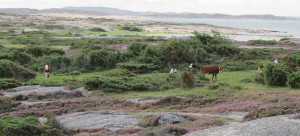
In the majority of cases, grazing is essential for successful and cost effective restoration. The main objective of the project was to restore valuable habitats in preparation for the reintroduction or increase of traditional management, primarily in the form of grazing. It is very important to start grazing as soon as possible because this significantly reduces the risk of the fertilising effect of clearance work. By combining clearance with restoration grazing, or burning, increases the chances of reaching favourable conservation status for the habitats and species relatively quickly. Grazing is required even after the end of the project if favourable conservation status is to bc maintained.
C4 Fencing
It is impossible for the local or regional site manager to recruit livestock farmers to sites where the fencing is not modern. The fencing was carried out in close cooperation with the landowners and the local livestock farmers. Fencing was required in nine of the projects Natura 2000-sites. The exact type of fencing and where it was erected is described in the restoration plans.
C 5 Investments for long term management
One ferry docking point was built at Härmanö (SE0520020). On this island the conditions to mooring a boat safely independent of the weather condition was not possible before the ferry docking was build.
Modern livestock farming does not only require good quality fencing but also effective equipment for putting out and collecting up the grazing animals. Therefore the project has invested in mobile corals.
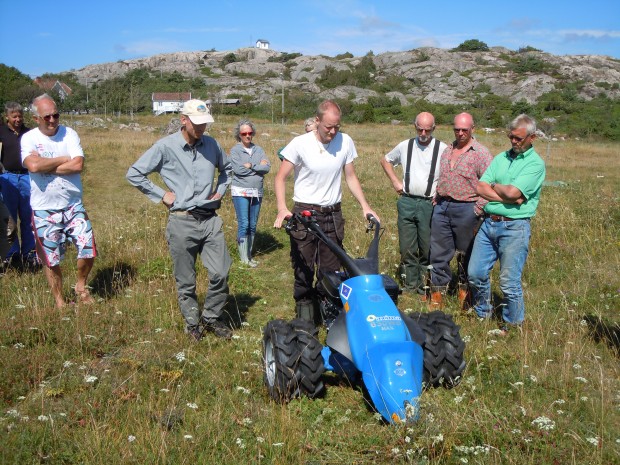
The inhabitants on Hällsö, Tanumskusten (SE052010) at a course to learn
how to handle a hay cutting machine
Information: website, leaflets, excursions, on-spot activities, seminars, etcas

